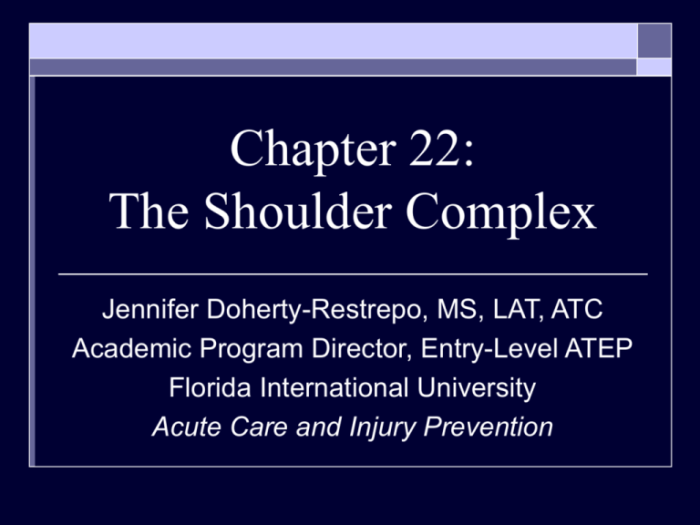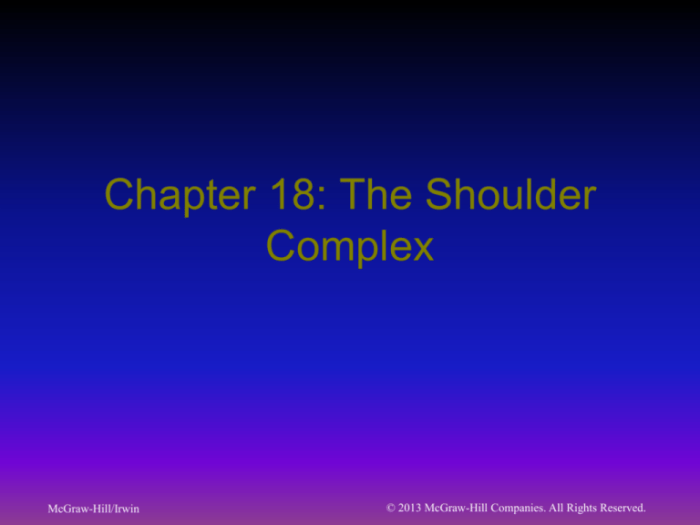Embarking on chapter 18 worksheet the shoulder complex, this comprehensive guide delves into the intricate anatomical structure, range of motion, and potential injuries associated with this vital joint. Join us as we unravel the complexities of the shoulder complex, empowering you with a deeper understanding of its function and significance.
Throughout this exploration, we will meticulously examine the bones, joints, and muscles that orchestrate the shoulder’s remarkable range of motion. We will dissect the delicate balance between stability and flexibility, uncovering the crucial role of muscles and ligaments in maintaining the shoulder’s integrity.
Overview of the Shoulder Complex: Chapter 18 Worksheet The Shoulder Complex

The shoulder complex is a complex and versatile joint that allows for a wide range of motion. It consists of the clavicle (collarbone), scapula (shoulder blade), and humerus (upper arm bone). The shoulder joint is a ball-and-socket joint, which allows for a wide range of motion, including flexion, extension, abduction, adduction, and rotation.
Key Muscles and Their Functions, Chapter 18 worksheet the shoulder complex
| Muscle | Function |
|---|---|
| Deltoid | Flexion, extension, abduction, and adduction |
| Supraspinatus | Abduction |
| Infraspinatus | External rotation |
| Teres minor | External rotation |
| Subscapularis | Internal rotation |
Essential Questionnaire
What are the key muscles involved in shoulder movement?
The deltoids, supraspinatus, infraspinatus, teres minor, and subscapularis muscles play pivotal roles in shoulder movement.
How can I prevent common shoulder injuries?
Proper warm-up exercises, maintaining good posture, and avoiding excessive or repetitive overhead activities can help prevent shoulder injuries.
What are the signs and symptoms of a shoulder dislocation?
Severe pain, deformity, swelling, and loss of function are common indicators of a shoulder dislocation.

